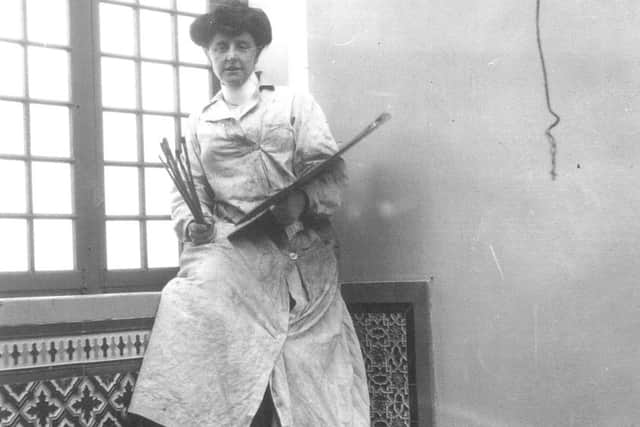The trailblazing Edinburgh artist who fought for entry to a man’s world
and live on Freeview channel 276
Now Mary Cameron, whose work was hailed by critics and who helped found the first group for female artists in Edinburgh, is to be honoured with the first exhibition of her work in her home city since she died nearly a century ago.
The City Art Centre in Edinburgh has announced plans to recognise the contribution of the Portobello-born artist it describes as “scarcely recognised, let alone celebrated,” despite enjoying success around Europe.
Advertisement
Hide AdAdvertisement
Hide AdMore than 40 works largely unseen for 100 years will be going on display at the council-run gallery in November under plans to celebrate “a woman who was truly ahead of her time.”


The four-month exhibition will explore how Cameron won her first prizes at the age of 17 after studying at Edinburgh College of Art, and also attended the city’s vet school and kept a horse to help her understand animal anatomy. It will also recall the discrimination faced by Cameron and her female contemporaries, even after they formed the Edinburgh Ladies’ Art Club, the first dedicated society for female artists in the city, and only the second in Scotland.
Although based in Edinburgh, she drew inspiration for her work from travels around Europe, to Norway, Holland, France and Spain, and sparked controversy for her graphic depictions of the latter country’s bullfights, one of which was used by campaigners against the centuries-old performances.
Cameron had more than 50 paintings exhibited at the Royal Scottish Academy in Edinburgh, by the turn of the century was being described by critics as “the most vigorous of the women painters in Scotland” and an artist who produced “frank and unconventional work.”
Advertisement
Hide AdAdvertisement
Hide AdHowever along with contemporaries like Meg Wright and Phoebe Anna Traquair, Cameron was turned down for membership of the RSA. Its president, Sir William Fettes Douglas, infamously described the work of female artists as “like a man’s, only weaker and poorer” in 1885. Women were not fully admitted until 1952 and Cameron’s work – which includes family portraits, studies of animals and rural landscapes painted on a her travels around Europe – was largely shunned by art galleries in Scotland after she died in 1921.
Dr Helen Scott, curator of the exhibition, Life In Paint, said: “Mary Cameron is part of a generation of female artists that most people have just not heard of now, however she was really well-known and successful during her lifetime. She had her work exhibited very widely, including in London and Paris, and had work shown almost annually at the RSA from 1886 until 1919.
“There was a real growth in the number of female artists coming through in Scotland in the late 19th century, but a lot of hurdles were put in their place and there was a lot of discrimination against them.
“Even when they got their work into shows it was often hung in weird places where it couldn’t be seen properly. Press coverage at the time reported how ridiculous it was.
Advertisement
Hide AdAdvertisement
Hide Ad“Mary Cameron was part of a group who were getting increasingly frustrated. They wanted a lot more opportunity to show their work without the kind of discrimination there had been at places like the RSA, whose president had basically said that the work of women was inferior to men, which seems incredible now.”